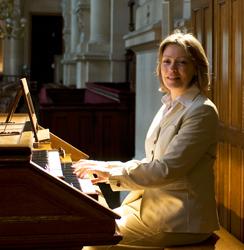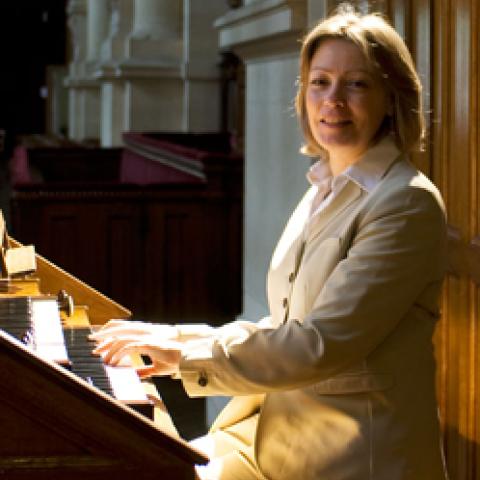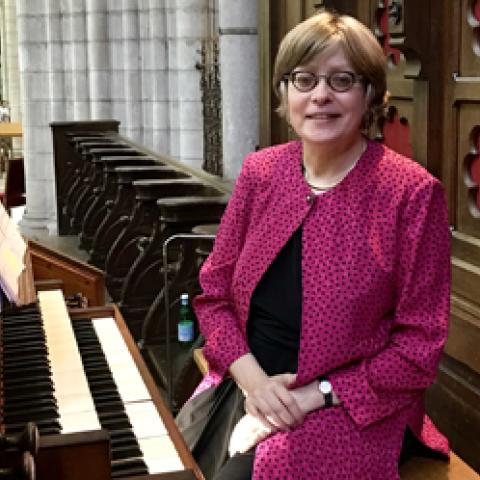
Carolyn Shuster Fournier’s article “Don Campbell, La musique est un pont” (“Don Campbell, Music Is a Bridge”) was published in Orgues nouvelles n° 25 (summer 2014); it describes a concert she gave in his memory on October 22, 2013. Her book, Un siècle de vie musicale à l’église de la Trinité à Paris, de Théodore Salomé à Olivier Messiaen, with a preface by Michel Chapuis, has been published by L’Harmattan editions in Paris.
On June 16, she performed a concert on the Clicquot/Cavaillé-Coll Grand Orgue at the Versailles Cathedral with her husband, Dominique Fournier (at the Cavaillé-Coll choir organ), which celebrated the 70th anniversary of the liberation of Paris, with works by Mozart, Selby, Touche, Fleury, Boëllmann, Gigout, Barber, and Vierne.
Carolyn Shuster Fournier accompanied the American Chorale Salute to Valor 2014, a choir with members from California, Arizona, and Florida, conducted by Ed Lojeski, Darrell Rowader, and Dennis Houser, with sopranos Jacki Doxey Scott, Heidi Cissell, and mezzo-soprano Kathy Weiler Josselyn, at the Trinité Church in Paris on June 19, at Sainte-Mère-Eglise on June 21, and at Bayeux Cathedral on June 22. This musical festival in honor of service members and veterans included Ed Lojeski’s Missa Americana and Psalms of the Passover, R. Frances Chadwick’s Song of Simeone, John Leavitt’s An American Quilt, Molly Ijames’s A Farewell, Peter Wilhousky’s Battle Hymn of the Republic, Randall Thompson’s Alleluia, and Jester Hairston’s Hold On. Carolyn Shuster Fournier performed instrumental selections on the piano with Dianne and Philip Rammon (violins), Stephen Custer (cello), Darryl Tanikawa (clarinet), notably John Williams’s Air and Simple Gifts, Serge Prokofieff’s Ouverture on Hebrew Themes, and George Gershwin’s Promenade.




